Space Station Concept Art How to Draw a Space Station
Far Out Space Station Concepts past NASA (Gallery)
Artist'south Conception of Space Station Freedom
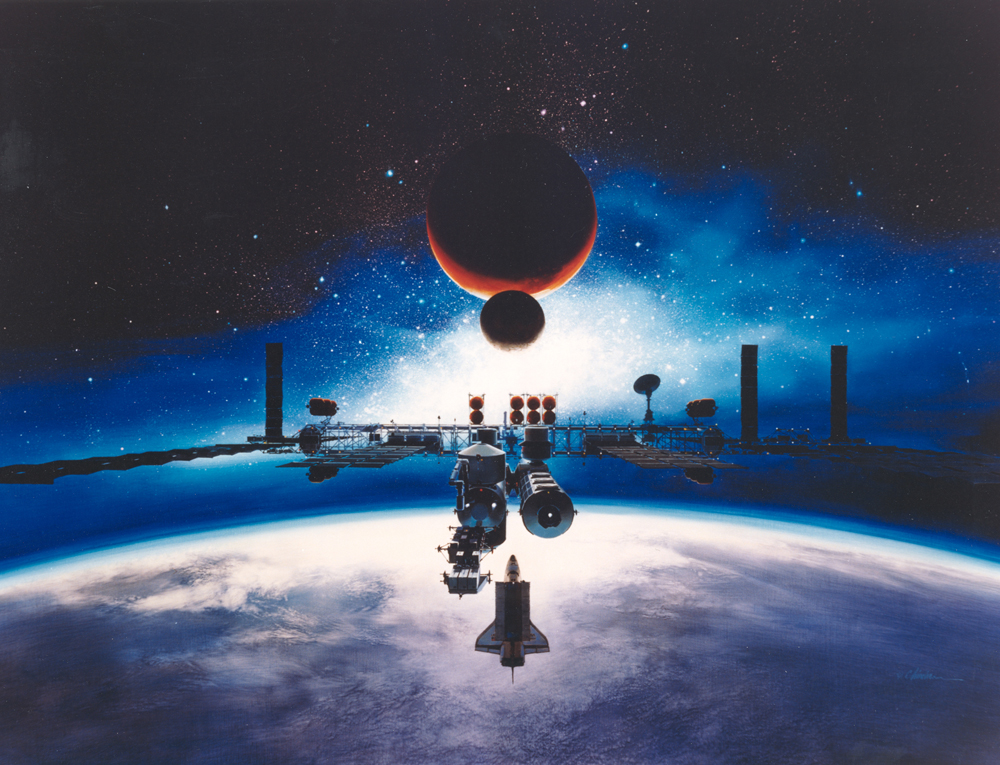
Alan Chinchar's 1991 rendition of the Space Station Liberty in orbit. The painting depicts the completed space station. Earth is used as the image's backdrop with the Moon and Mars off in the distance. Freedom was to be a permanently crewed orbiting base to exist completed in the mid 1990'due south. It was to have a crew of 4. Liberty was an effort at international cooperation that attempted to incorporate the technological and economic assistance, of the The states, Canada, Nippon, and nine European nations. The image shows four pressurized modules (three laboratories and a habitat module) and vi large solar arrays which were expected to generate 56,000 watts of electricity for both scientific experiments and the daily operation of the station. Space Station Freedom never came to fruition. Instead, in 1993, the original partners, too as Russia, pooled their resources to create the International Infinite Station.
2001:A Space Odyssey Space Station
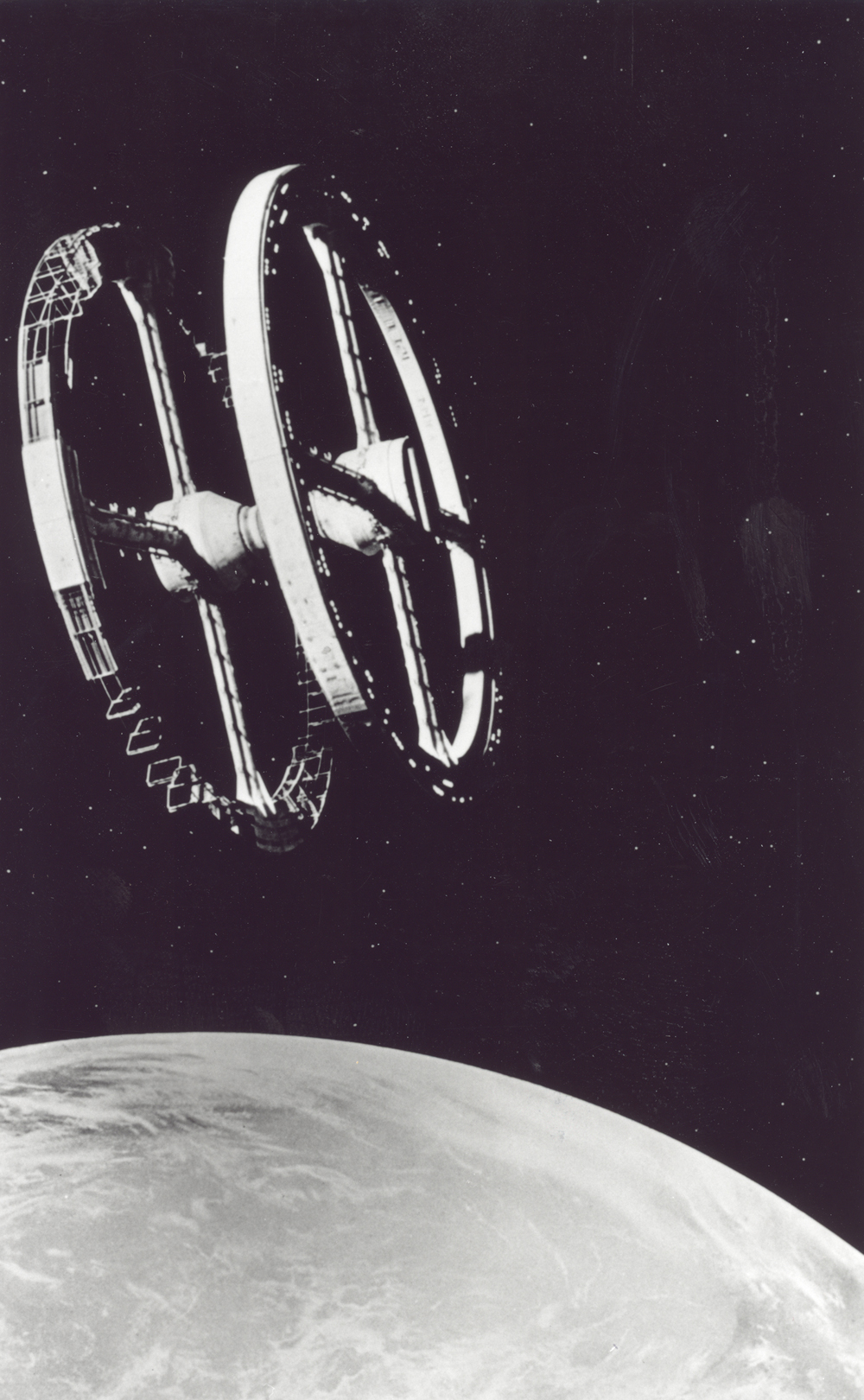
This the classic space station epitome from the flick 2001:A Infinite Odyssey, directed by Stanley Kubrick in 1968. Praised for its special effects, the flick based its space station concept on Wernher Von Braun'due south model. Kubrick'southward station in the flick was 900 anxiety in bore, orbited 200 miles in a higher place Earth, and was abode to an international contingent of scientists, passengers, and bureaucrats.
Proposed USAF Manned Orbiting Laboratory
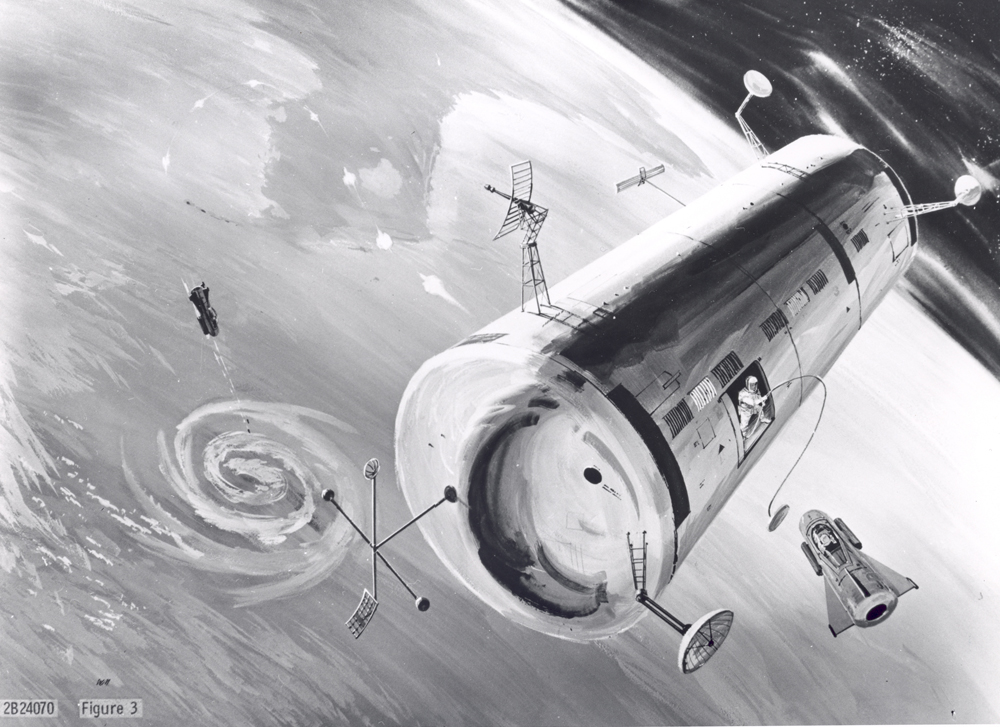
A 1960 concept image of the United states of america Air Force's proposed Manned Orbiting Laboratory (MOL) that was intended to test the armed services usefulness of having humans in orbit. The station'south baseline configuration was that of a two-person Gemini B spacecraft that could be attached to a laboratory vehicle. The structure was planned to launch onboard a Titan IIIC rocket. The station would be used for a month and then the astronauts could return to the Gemini sheathing for transport back to Earth. The first launch of the MOL was scheduled for Dec 15, 1969, just was then pushed back to the autumn of 1971. The program was cancelled by Defense Secretary Melvin R. Laird in 1969 later on the estimated toll of the plan had risen in excess of $3 billion, and had already spent $1.three billion. Some of the military astronauts selected for the program and then transferred to NASA and became some of the get-go people to fly the Infinite Shuttle, including Richard Truly, who later became the NASA Administrator.
Spider Space Station Concept
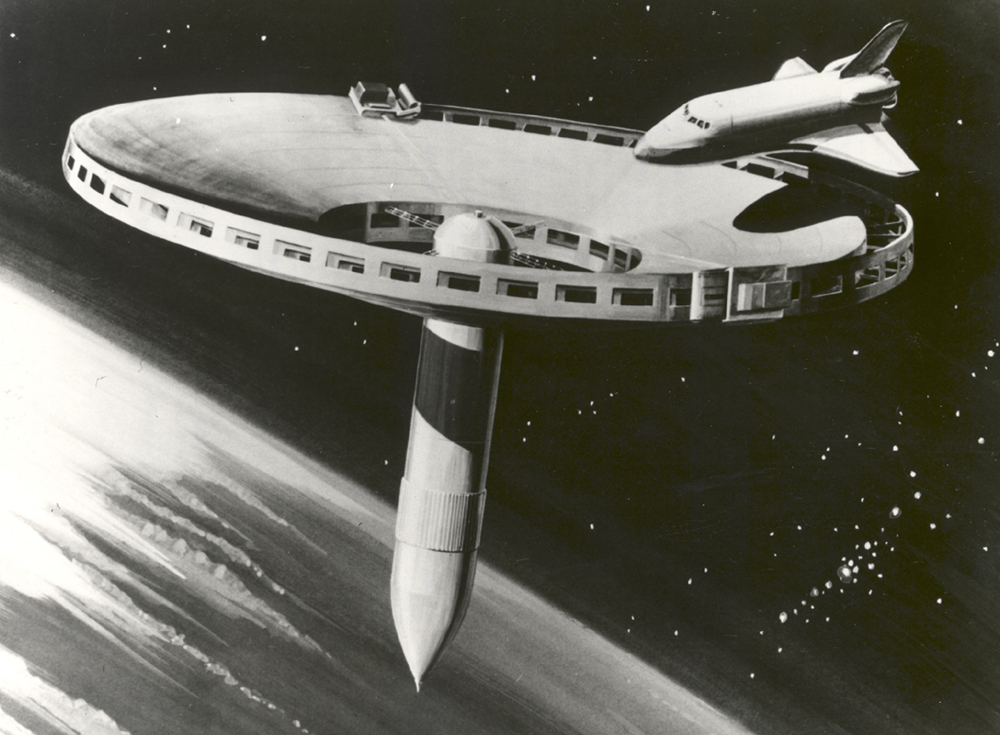
A 1977 concept drawing for a space station. Known every bit the "spider" concept, this station was designed to use Space Shuttle hardware. A solar array was to be unwound from the wearied main fuel tank. The structure could so be formed and assembled in one operation. The main engine tank would then exist used as a space operations command center, a Shuttle astronaut crew habitat, and a space operations focal point for missions to the Moon and Mars.
Roof Space Station Concept
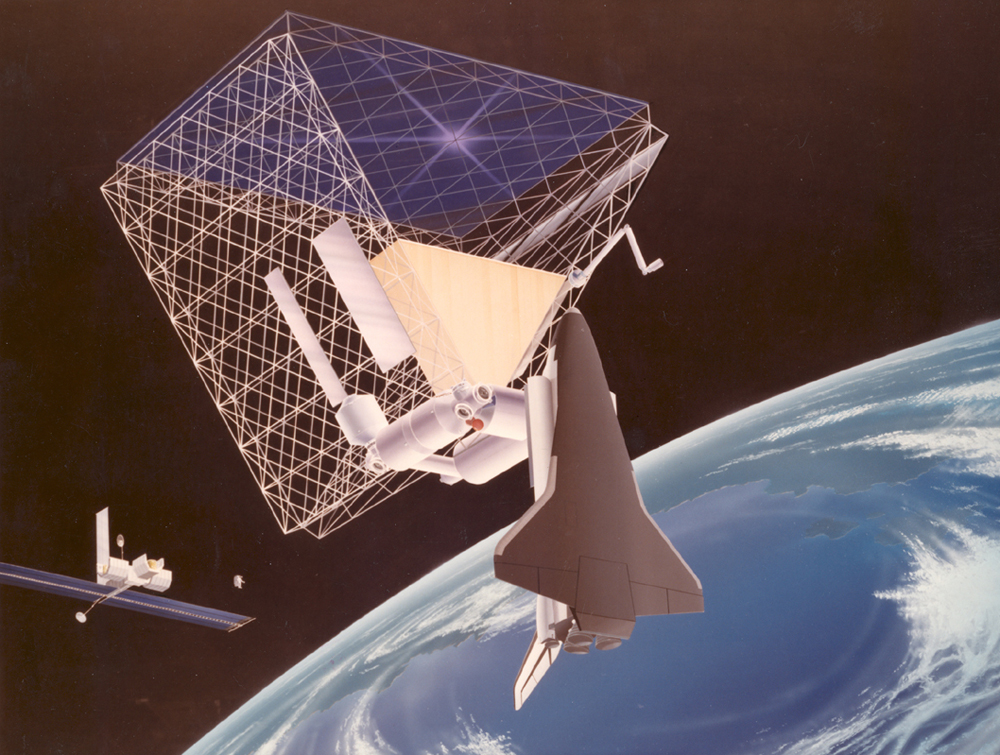
This is the Johnson Space Middle's 1984 "roof" concept for a infinite station. The "roof" was covered with solar array cells, that were to generate about 120 kilowatts of electricity. Inside the V-shaped beams at that place would be five modules for living, laboratory space, and external areas for instruments and other facilities.
Skylab Concept by George Mueller
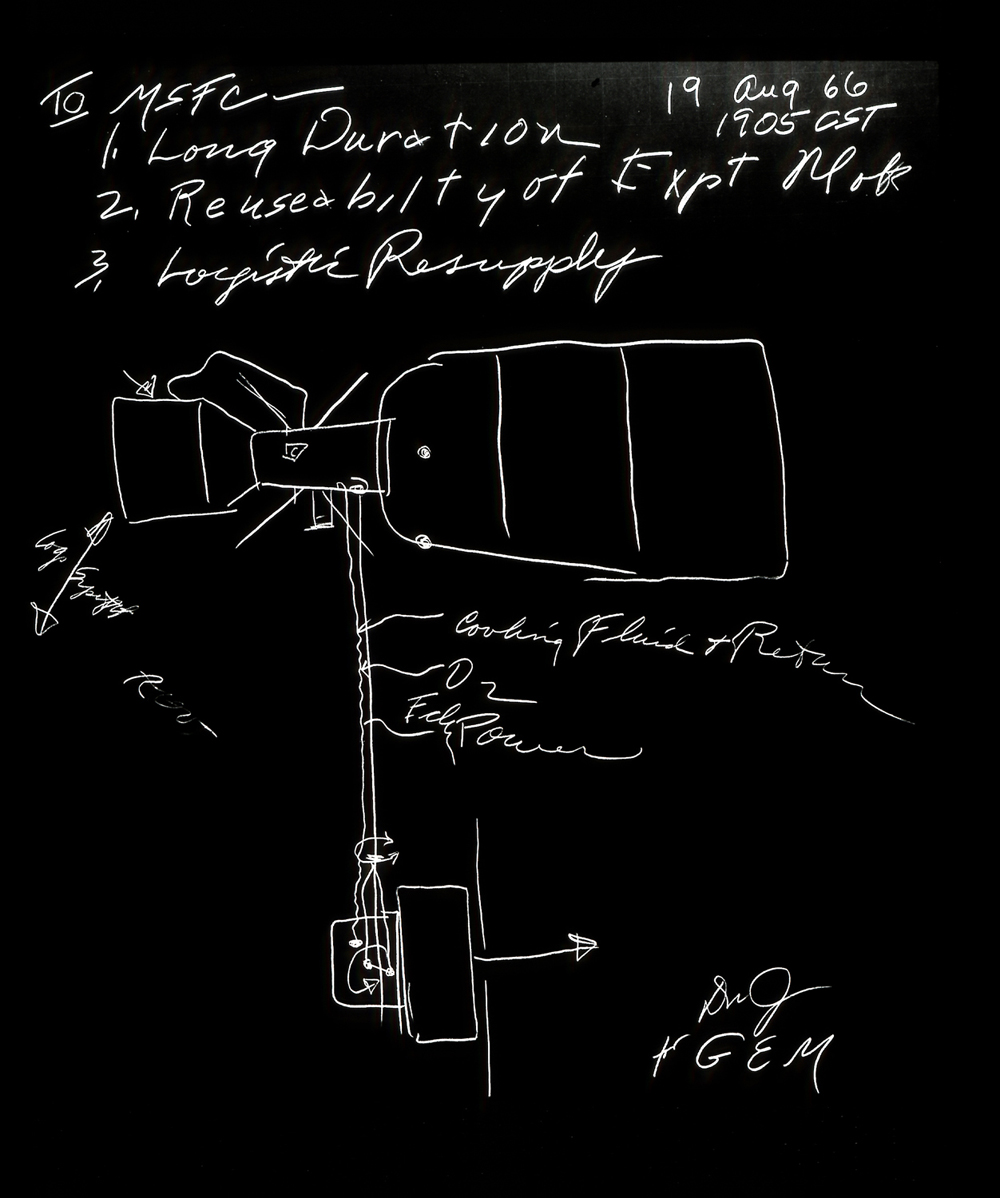
This is a sketch of Skylab, equally drawn past George E. Mueller, NASA acquaintance administrator for Manned Space Flying. This concept cartoon was created at a meeting at the Marshall Space Flight Center on August 19, 1966. The image details the station'south major elements. In 1970, the station became known equally Skylab. Three manned Skylab missions (Skylab 2 in May 1973; Skylab 3 in July 1973; and Skylab 4 in November 1973) were flown on which experiments were conducted in:space science, earth resources, life sciences, space engineering, and student projects.
Brick Moon Space Station Concept
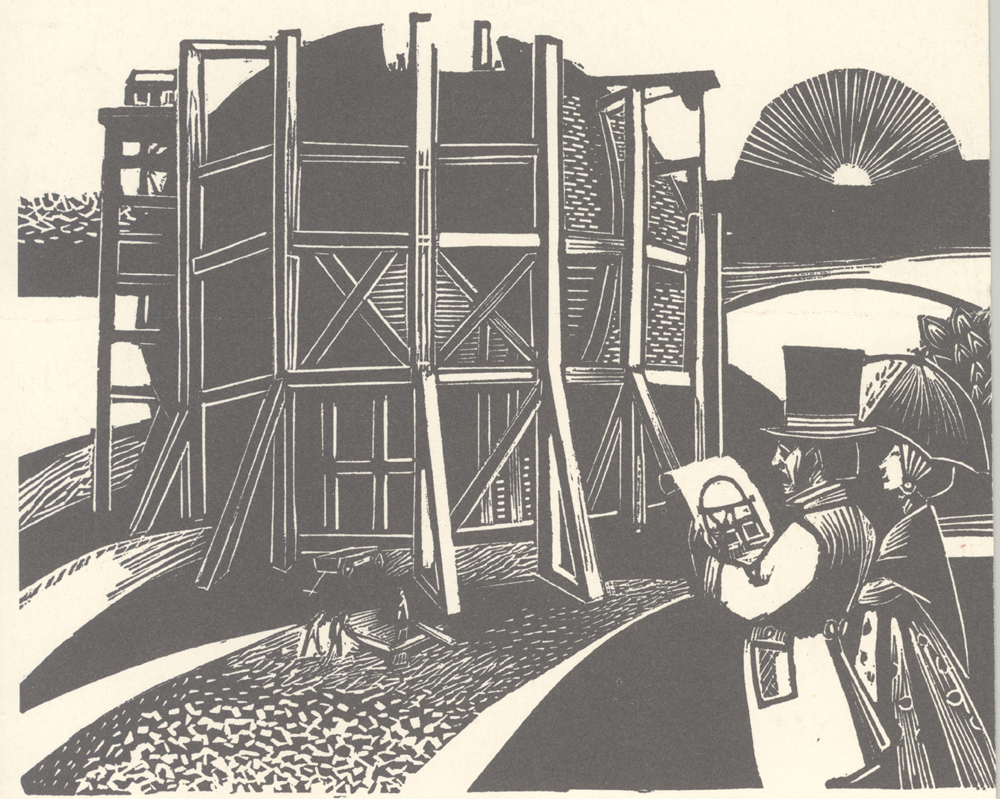
This is an artist's impression of the "Brick Moon." "The Brick Moon" was the title of an commodity published in the Atlantic Monthly by Edward Everett Hale in 1869. This piece was the first known proposal for an Earth-orbiting satellite. Hale envisioned that the satellite could be used by mariners equally a navigational help. He believed information technology would be the longitudinal companion to the latitudinal North Star. In 1869, this story was considered fantasy but in retrospect "The Brick Moon" foreshadowed the demand for a space station and some of its technologies.
Noordung'southward Three-Unit of measurement Space Station Concept
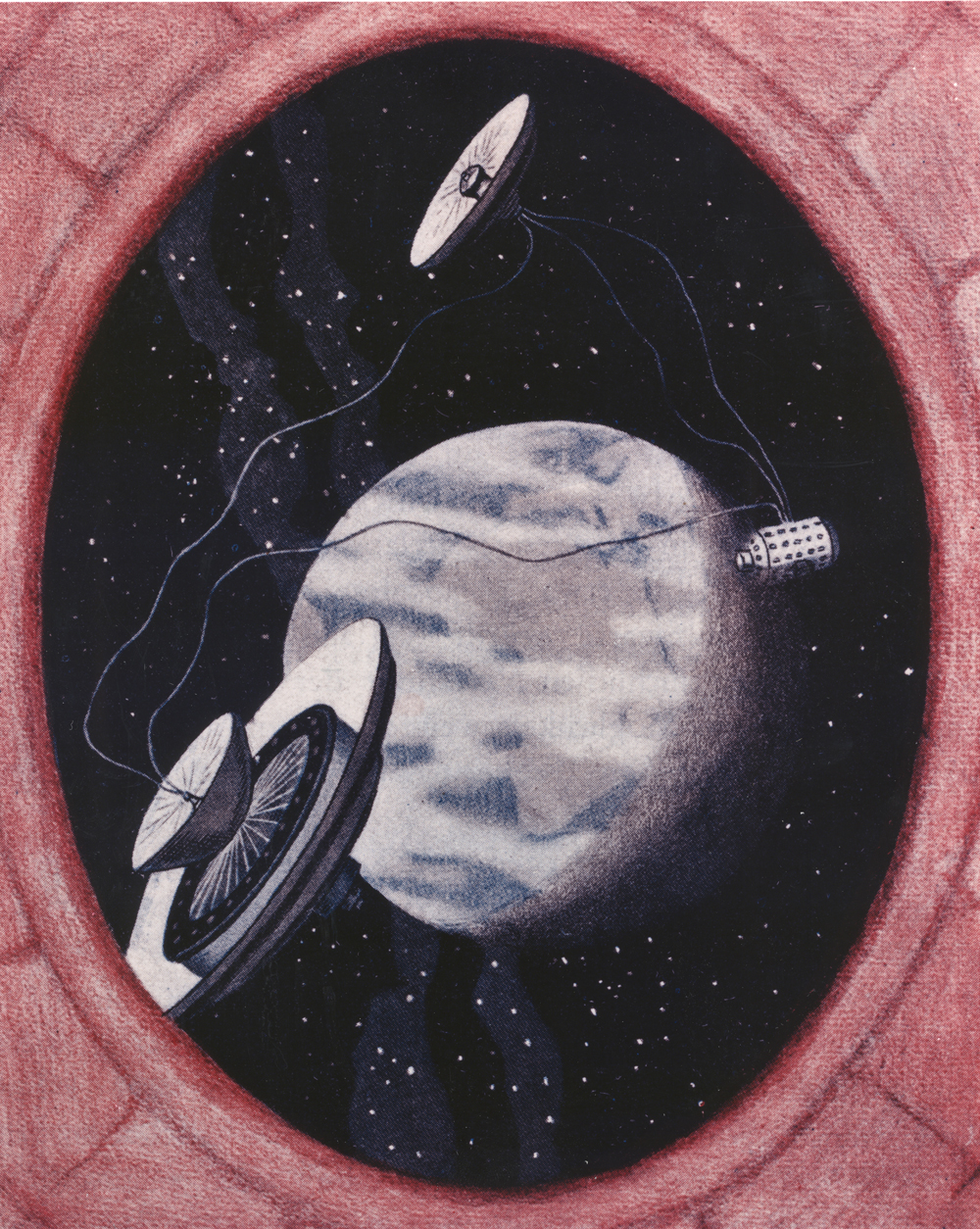
This 1929 Hermann Noordung paradigm depicts a iii-unit space station equally seen from a space ship. Hermann Potocnik (1892-1929), besides known equally Herman Noordung, created the showtime detailed technical drawings of a space station. The 3 units were the habitat, the machine room, and the observatory, each connected by an umbilical. The Earth is in the background, approximately 26,000 miles away. The station in this image is roughly above Republic of cameroon's southern tip, in a geosynchronous orbit on the median of Berlin.
Noordung's Space Station Habitat Bicycle
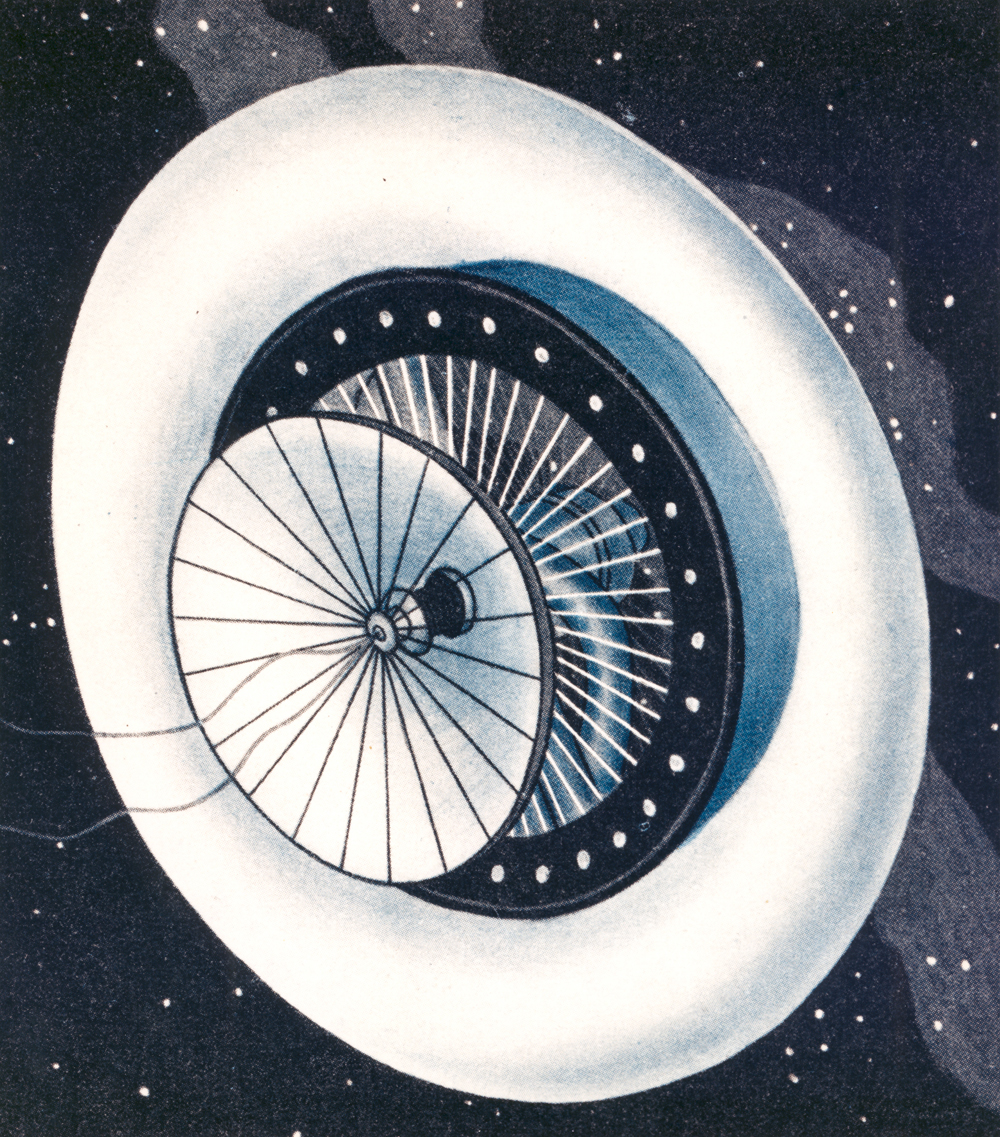
1929 Hermann Noordung delineation of a infinite station habitat cycle. Hermann Potocnik (1892-1929), as well known as Herman Noordung, created the first detailed technical drawings of a space station. Power was generated past collecting sunlight through the concave mirror in the center. This was one of three components of Noordung's space station. The other 2 were the observatory and the machine room, each connected to the habitat by an umbilical.
Iii-Radial-Module Infinite Station Concept
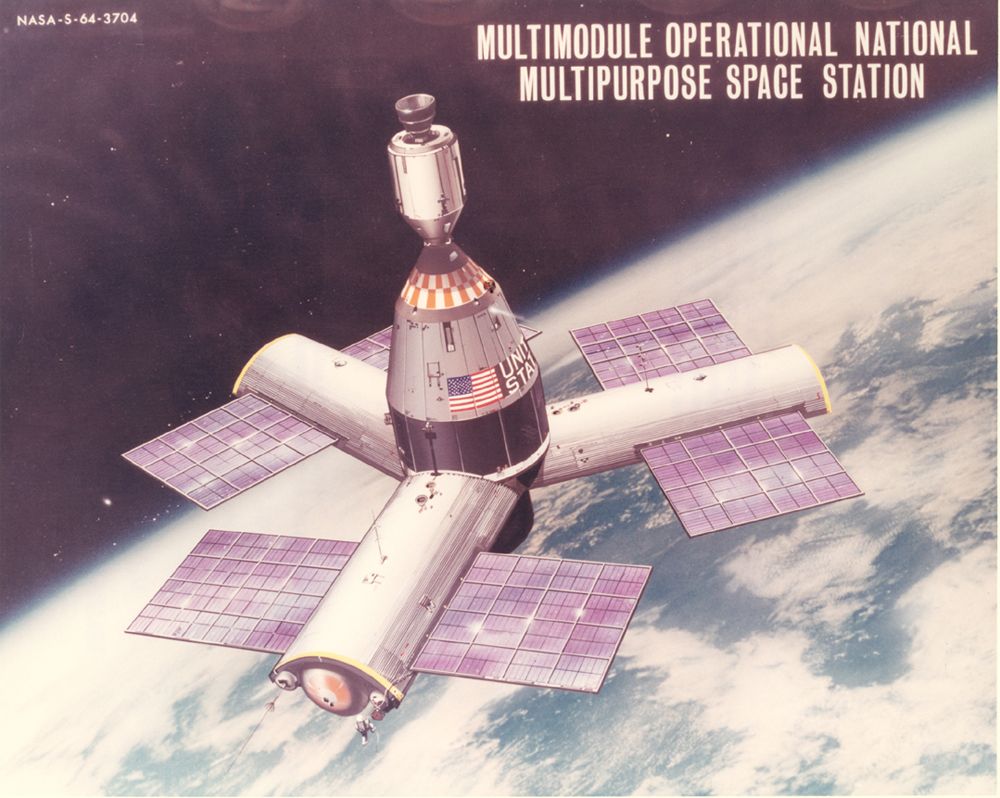
This iii-radial-module space station concept was intended to apply Apollo hardware to deploy the station and to transfer crews to and from orbit.
Bogus Gravity Space Station
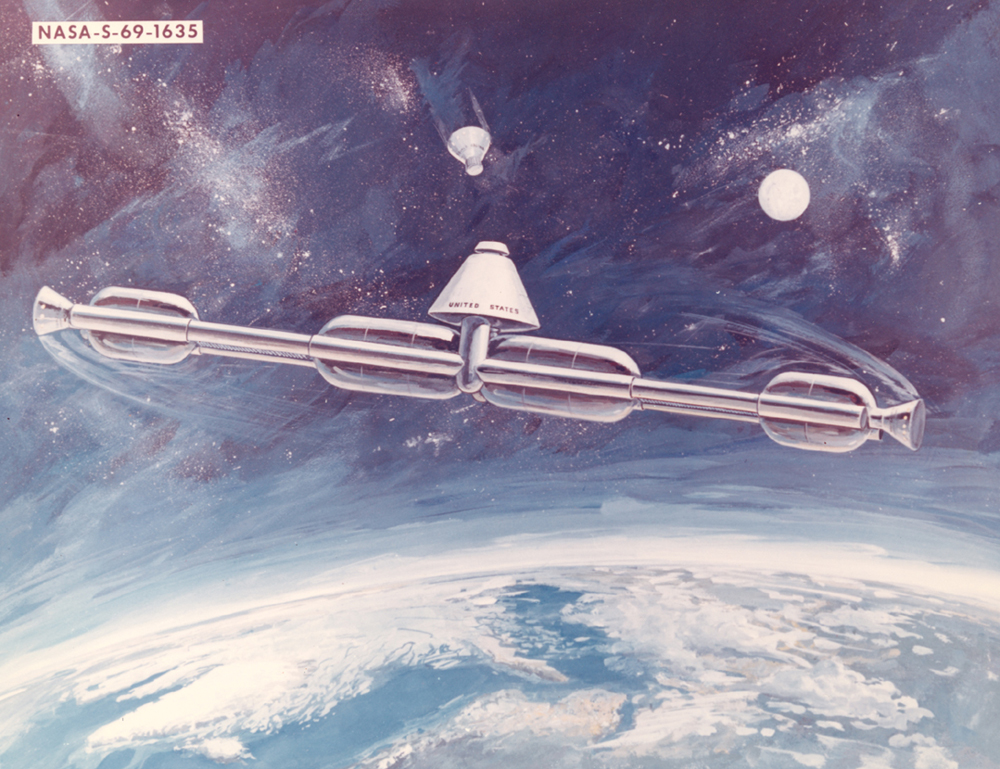
A 1969 station concept. The station was to rotate on its key axis to produce artificial gravity. The majority of early on space station concepts created artificial gravity ane way or another in order to simulate a more than natural or familiar surround for the health of the astronauts. Later returning micro-gravity surroundings, astronauts find their muscles weak because they take not been using them. Long-term exposure to micro-gravity could generate long-term health problems for astronauts who do non utilize their muscles. This is why at that place are exercise machines on infinite shuttles and on the International Space Station. It was to be assembled on-orbit from spent Apollo program stages.
Join our Infinite Forums to keep talking space on the latest missions, nighttime sky and more! And if you have a news tip, correction or annotate, let us know at: community@space.com.
Source: https://www.space.com/16091-nasa-space-station-concepts-art-images.html

0 Response to "Space Station Concept Art How to Draw a Space Station"
Post a Comment